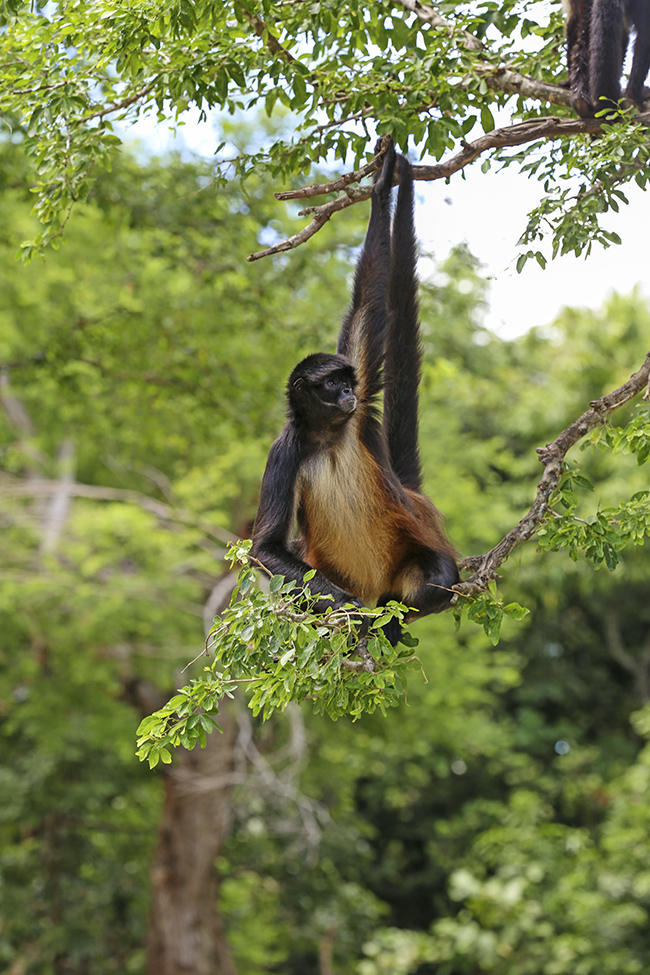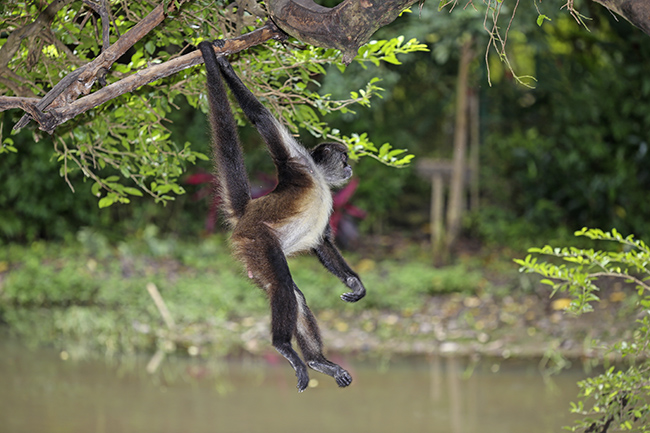Spider Monkey, Ateles Geoffroyi
The spider monkeys at AutoSafari Chapin come in several colors, especially whitish and light greyish. I tend to consider the spider monkeys of Tikal as being black, with some white or gray on their stomach. So the lighter colored ones here at the zoo are not as familiar to me.
Brownish spider monkeys also can be seen in zoos. But it would be helpful to have zoological reports of spider monkeys in the wild in Chiapas, El Peten, and Belize to learn which range of colors are natural to spider monkeys of the heartland of the Lowland Classic Maya.
Spider monkeys can be studied at AutoSafari Chapin, Guatemala
Most of the spider monkeys at AutoSafari Chapin are not in cages. Instead they are on islands in ponds or lakes. This way the spider monkeys can wander around either on the ground or in the trees.
What is most amazing is to watch how the monkeys wade through the water! In theory, if the monkeys wished to, they could easily get off their island. But clearly they are content in their area, and they do not try to move elsewhere (a good sign that they feel relaxed where they are).
I usually use a 200mm macro NIKKOR lens on my Nikon D800E or a 180mm macro-telephoto lens on my Canon EOS 6D. This way I am not starting any stress in the monkey by getting to close. I would assume they are territorial. But I have found that it often helps to have a 300mm or 400mm lens. And if you want head-shots, a 500mm or 600mm lens would be even better.
Posted late August 2015
after our umpteenth educational research visit to AutoSafari Chapin.


























